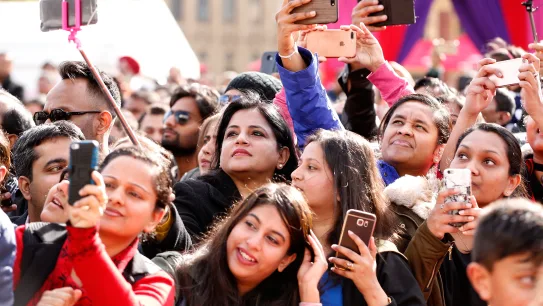“many Indians in Australia “drive cabs in the wee hours, man 7/11 franchises, and gather scattered trolleys at supermarkets, amongst a long list of arduous tasks, but they also teach at schools and universities, lead mega engineering projects, save lives at hospitals and treat the sick at medical centres, manage the information technology in big companies, showcase the best of the cuisines at Indian restaurants, and own micro, medium, and large businesses in Australia”.
— Ashutosh Misra
The Indian diaspora in Australia has “carved a niche for itself in Australian society”, writes Ashutosh Misra in his personal capacity. He is the CEO, Institute for Australia India Engagement, Brisbane, National Sports Chair {Australia India Business Council} and Editor-in-Chief, India News Australia. In an article in the dailypioneer, Misra points out that many Indians in Australia “drive cabs in the wee hours, man 7/11 franchises, and gather scattered trolleys at supermarkets, amongst a long list of arduous tasks, but they also teach at schools and universities, lead mega engineering projects, save lives at hospitals and treat the sick at medical centres, manage the information technology in big companies, showcase the best of the cuisines at Indian restaurants, and own micro, medium, and large businesses in Australia”.
The Indian diaspora, he mentions, has entered into business, politics, the judiciary, government, civil society, academia, science, the performing arts, and sporting codes. According to the Australian Bureau of Statistics (ABS) 2021 census 783,958 persons declared their ancestry as Indian constituting 3.1% of the Australian population. They constitute the second largest taxpayers and easily outnumber their Australian counterparts in stadiums during the Border-Gavaskar series.
The situation was different 20 years ago. Not many could have anticipated their meteoric rise and role in ‘Advancing Australia Fair.’ A report prepared by the Australian Department of Foreign Affairs and Trade entitled, “Australia’s Indian Diaspora: A National Asset: Mapping the Community’s Reach into the Australia-India Economic Relationship” encapsulates the rise of the diaspora.
As of 2021, numbering over 780,000 Indian migrants have overtaken Chinese and New Zealand-born immigrants. Their numbers doubled during 1996-2006, quadrupled during 2006-2020, and were Australia’s fastest growing large diaspora community in 2020
Calling the Indian diaspora ‘aspirational’, the report shows that a comparatively younger diaspora was vital for meeting Australia’s skills shortage, technological development, and exports. Largely concentrated (70%) in the states of Victoria and New South Wales, the diaspora has moved interstate into Queensland, South Australia, and Western Australia. In any developing suburb, the Indian family is a common sight. The DFAT report indicated the cumulative effect of a generally highly educated youthful, linguistically diverse, and growing community, plugged into networks of innovation, and well represented in business, across services and science, technology, engineering, and mathematics (STEM) sectors with strong export potential. It is a key contributor to not only bilateral trade and investment but Australia’s international competitiveness.
According to the 2021 Orbis database of company information collated by Bureau van Dijk, a Moody’s Analytics Company – people of Indian heritage are employed in at least 996 Australian organizations of which an estimated 2,840 (13%) as directors and managers (12.5% women), constituting 3% of the Australian population. The report says that 964 of these 2,840 could potentially drive bilateral business and trade engagements in health, tourism, ICT, and resources, across companies with a gross $250 billion annual turnover.
As of 2021, numbering over 780,000 Indian migrants have overtaken Chinese and New Zealand-born immigrants. Their numbers doubled during 1996-2006, quadrupled during 2006-2020, and were Australia’s fastest growing large diaspora community in 2020. Australia’s Department of Home Affairs has even established a Global Talent Officer for South Asia, eying India as a source of global talent.
*********************************************************************
Readers
These are extraordinary times. All of us have to rely on high-impact, trustworthy journalism. And this is especially true of the Indian Diaspora. Members of the Indian community overseas cannot be fed with inaccurate news.
Pravasi Samwad is a venture that has no shareholders. It is the result of an impassioned initiative of a handful of Indian journalists spread around the world. We have taken the small step forward with the pledge to provide news with accuracy, free from political and commercial influence. Our aim is to keep you, our readers, informed about developments at ‘home’ and across the world that affect you.
Please help us to keep our journalism independent and free.
In these difficult times, to run a news website requires finances. While every contribution, big or small, will makes a difference, we request our readers to put us in touch with advertisers worldwide. It will be a great help.
For more information: pravasisamwad00@gmail.com



